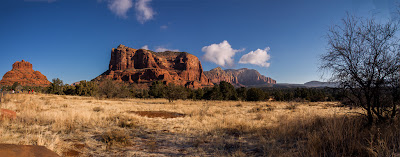On one of our day trips from Apache Junction, Arizona, we visited the Tonto Cliff Dwellings (Tonto National Monument), located near the Roosevelt Dam. Situated between the northern Colorado Plateau and southern Sonoran Desert, the Tonto Basin is home to a diverse selection of animals and plants and was farmed by ancient inhabitants. Lower elevations, are home to a variety of cactus-like plants including the famous saguaro, cholla, prickly pear, agave, and jojoba. In higher elevations, oak, juniper, pinyon, and ponderosa pines dot the hills.

During the 13th-early 15th centuries, the Salado people (derived from the name of the Rio Salado - Salt River that flows through the area) made the area home, including the cliff dwellings that are preserved still today. It was fun walking through the remaining rooms, imagining what life in these cramped quarters must have been like. Blackened walls and ceilings (some of the original timbers and ceilings are still intact) still bear the signs of cooking and wood fires. Some hand/fingerprints from the Salado applying mud over the adobe can also be found. The visitor center has a nice, but small collection of weavings, polychrome pottery, yucca-woven sandals, and other artifacts from the site.






























